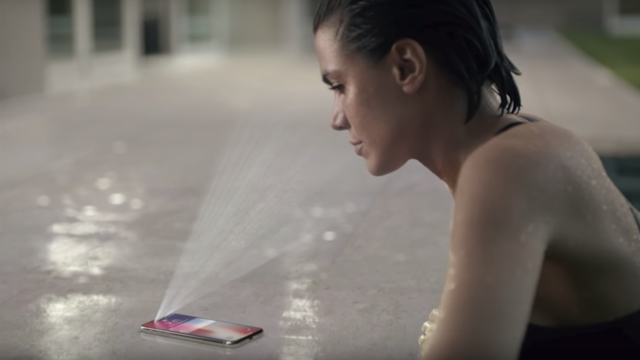While Android phone makers have gotten a lot of hate for copying the notch on the iPhone X, not one of them has been able to recreate the tech stashed inside that notch: Face ID. And if a report from Reuters is true, that might not change until sometime in 2019.
Image: Apple
The problem for Android phone makers is that there’s a massive shortage of components required to create the kind of 3D sensing cameras found in the iPhone X. Reuters talked to three of the largest suppliers of 3D sensing tech – Viavi Solutions, Ams AG and Finisar Corp, which is one of Apple’s main Face ID parts makers – and all three companies agreed that severe bottlenecks on key parts means “mass adoption of 3D sensing will not happen until next year”.
According to Reuters, the most difficult to obtain parts are VCSELs, or vertical-cavity surface-emitting lasers, which is the core component of Face ID responsible for projecting thousands of tiny little lasers onto people’s faces.
When asked about the outlook for other phones with having Face ID-like tech, Viavi’s senior director of investor relations Bill Ong told Reuters “We may have a potential introduction of a second handset maker into 3D sensing at the end of this calendar year. (But) the volumes would be very low. In 2019 you clearly will see at least two or more Android-based phones.”
Currently, Apple primarily uses Face ID for biometric authentication and those loveable Animoji, however, Gartner analyst John Erensen was quick to point out that 3D sensors will also play an important role in the advancement of AR tech as whole.
Gartner predicts that by 2021, 40 per cent of smartphones will have some sort of 3D camera, which could be used for both security and for use in various augmented reality apps.
In the past, some Android handsets like those on Google’s Tango AR platform, such as the Lenovo Phab 2 Pro and the ZenFone AR, featured their own rear 3D cameras. However, since Google shut down Tango late last year, it’s largely going to be on the shoulders of individual Android phone makers to add 3D sensing capabilities to phones in the future. But first they’re going to have to find some lasers.
[Reuters]
